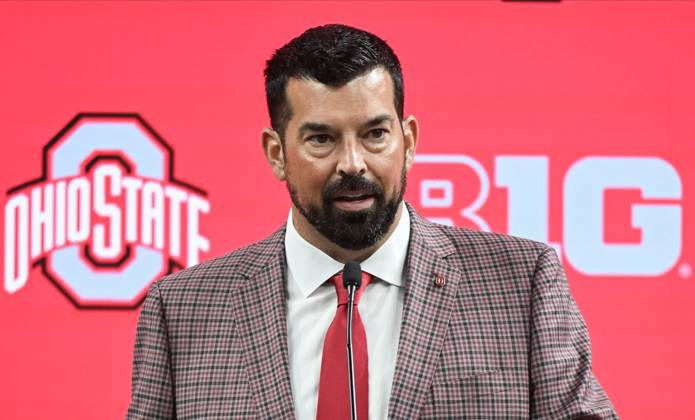
Imago
source : Imago

Imago
source : Imago
Speaking of college football, the matter of NIL (Name, Image, Likeness) contracts and the changes they bring to this sport is becoming more and more popular. Recently, GoJo and Golic stirred up quite a discussion with their video on X. They brought up a major point: “Ohio State is said to have a $20 million total compensation NIL bag”. Now, that’s a lot of money for the OSU! And to put it into perspective, how does it compare to its NFL counterparts? What does this hold for other college football teams in the future?
Watch What’s Trending Now!
Andy Staples posted a rather perceptive idea. He spoke of the fact that, in the NFL, teams are willing to spend up to $14 million to acquire a good safety for only a season. Thus, when viewing college football, getting an entire team for $20 million does not seem like a bad idea at all. The conversation goes deeper, though. Getting higher with the possible future alterations: the House Vs. NCAA settlement. Schools could soon have more money to spend big and college football is all set for a revolution.
The NIL money arms race has begun. It’s the way these funds can change the game. With the latest settlement being processed, schools can spend as much as $22 million; we are entering a new age that can see college football as the next contender to the NFL in terms of economic influence. But that isn’t without issues. The salary cap in college football could infringe on the sport, and there is a lot of concern about how to control and share this money.
ADVERTISEMENT
“Ohio State has the $20M bag of NIL money. Where are we in the money arms race, and how big can it get [in college football]?” @golic
“How big could it get? As big as the market will bear. You pay $14M for a decent Safety in the NFL for one year. Getting a whole team for $20M… pic.twitter.com/UfovaDiGv7
— GoJo and Golic (@GoJoandGolic) August 28, 2024
What’s next for college football? The money race could probably take it to different heights as to how big the game can be. The notion is that assuming schools can provide better terms, they could recruit great players and alter football. However, as Andy Staples puts it, “As big as the market will bear. ” If the market supports it, we could witness a brand new college football financial landscape.
ADVERTISEMENT
The money arms race and what it means for college football
Ohio State’s $20m in NIL contracts are still only the initial bunch. While many schools are seeking ways to strengthen their programs, the risk is greater than before. This is true because the above-mentioned kinds of deals pale in comparison to NFL players’ salaries, which underlines those offers’ importance. Signing a solid NFL safety for one year will cost $14 million, which demonstrates the potential value of investing in college football talent acquisition.
The “House vs. NCAA” settlement could turn out to be a game-changer. Schools may be able to expend as much as $22 million, but this raises questions about fairness and legality. The concept of salary cap in college football is an interesting one and might come across legal issues down the line. However, if the market allows for these big spends, college football can grow and be more competitive than it already is.
ADVERTISEMENT
With this changing financial picture, it is evident that college football, especially Ohio State, is moving to a new level. It may come to the point that needed programs will receive more money, which could shift the game in forms not witnessed before. The big question is: what consequences do these changes bring to this sport? How will Ryan Day’s OSU benefit from this?
Top Stories
NFL Suspends Chargers’ Denzel Perryman for Two Games Over Cowboys Incident

Clark Hunt Admits Being Pressured to Leave Arrowhead After Chiefs Offered $2.4B Proposal

Lee Trevino, 86, Leaves Golf World Hanging on Every Word at PNC: ‘I’ve Been Digging Worms’

Steelers Confirm $45M Punishment for DK Metcalf After NFL Suspended WR for 2-Games

Sean McDermott Confirms if Bills Will Sign a QB Amid Josh Allen’s Injury Concerns

Trent Williams Announces Retirement Plans After 49ers Clinch Playoff With Win vs Colts

ADVERTISEMENT
ADVERTISEMENT
ADVERTISEMENT

